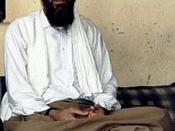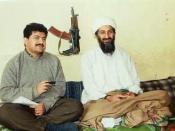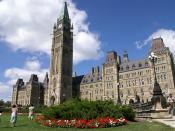Traditionally, Canada's military has supported its powerful allies, defended the principle of democracy, and protected its trading partners. Since 1956, it has participated in United Nations peacekeeping and security operations.
1990: Oka CrisisIn 1990, Mohawks living on the Kanesatake reserve in Quebec believed that some important ancestral lands of theirs would be taken over by a golf course. They erected a barricade, blocking access to the municipality of Oka and the Kanesatake reserve. Three months later, police attacked the barricade being guarded by the Mohawks. Shots were fired and Marcel Lemay, an officer with the Quebec provincial police force, was killed.
After this, the conflict only worsened. The Quebec provincial police put up their own barricades. Other aboriginal groups arrived. The Oka dispute was soon seen as a fight for respect and independence for the First Nations people.
Quebec premier, Robert Bourassa, asked for help from the Canadian Armed Forces. Once the military got there, negotiations proceeded slowly. After a few weeks, the barricades came down and the Mohawks gave up the fight.
1992: SomaliaThe Somalia missions turned out to be a shameful incident in Canada's history of peacekeeping. In late 1992, Canadian soldiers were sent to Somalia on a difficult peacekeeping mission. A few months into the mission, Canadian soldiers shot two Somalis who were attempting to break into the compound and steal supplies. Then a 16-year-old was tortured and murdered by Canadian soldiers on the base. One of the soldiers even took photos of the torture.
There was an investigation. The two soldiers most directly involved in the murder were charged. One of them tried to hang himself in his cell and suffered brain damage. He was found unfit for trial. The other was found guilty and sentenced to five years in military prison. An inquiry showed...


